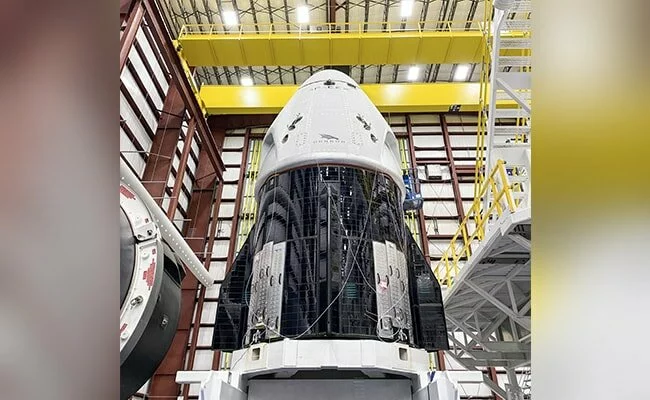The historic launch of SpaceX to the International Space Station – the first crewed mission to take off from American soil in nearly a decade – was canceled on Wednesday due to bad weather.
With NASA astronauts Bob Behnken and Doug Hurley strapped into the Crew Dragon pod, the retracted launch pad platform and the rocket refueling underway, SpaceX called for the halt.
“Unfortunately, we’re not going to launch today,” said launch director Mike Taylor, less than 20 minutes from takeoff.
Officials cited the threat of lightning, among other factors.
This means waiting at least a few more days for the first crewed launch of an American rocket since the end of the space shuttle program in 2011. They will try again on Saturday.
If successful, the launch will be the first time that the feat will be performed by a private company.
A live video stream showed Behnken and Hurley – in their futuristic white uniforms adorned with the American flag and NASA and SpaceX logos – waiting for the propellant to be unloaded from the reusable Falcon 9 rocket.
The emergency ejection system remained armed until the fuel tanks were emptied in the event of an accidental explosion.
The launch was scheduled for 4:33 p.m. (8:33 p.m. GMT) from Kennedy Space Center launch pad 39A. Neil Armstrong and his Apollo 11 teammates took off from the same location on their historic trip to the Moon.
The mission intervenes despite the stops caused by the coronavirus pandemic, the crew having been in quarantine for two weeks.
President Donald Trump and First Lady Melania Trump had arrived in Florida to watch, but returned to the White House after the launch was canceled.
SpaceX wins over Boeing
Founded in 2002, Space Exploration Technologies Corp. has torn the rules apart to produce a cheaper alternative to human spaceflight that has gradually won over skeptics.
In 2012, it had become the first private company to dock a cargo capsule at the ISS, having regularly replenished the station since.
Two years later, NASA orders the next step: transport its astronauts there by adapting the Dragon capsule.
“SpaceX wouldn’t be here without NASA,” founder Elon Musk said last year after a successful dress rehearsal without humans for the journey to the ISS.
The American space agency has spent more than $ 3 billion for SpaceX to design, build, test and operate its reusable capsule for six future space round trips.
The project has experienced delays, explosions, and skydiving problems – but even so, SpaceX has beaten the aerospace giant Boeing.
Boeing’s entry into NASA, the Starliner, is still not ready.
NASA’s decision to invest in privately developed spacecraft – a more economical proposition than spending tens of billions of dollars to develop such systems itself, as it had done for decades – was started under the presidency of George W. Bush for freight. , then under Barack Obama for human theft.
At the time, there was immense hostility to Congress and NASA to the start-up’s claims about what it could accomplish.
End dependence on Russia
A decade later, Trump was there for the launch.
The Republican is trying to reaffirm American domination of space, militarily but also by ordering a return to the Moon in 2024.
If NASA could entrust space travel in “low Earth orbit” to the private sector, it would free up dollars for its more distant missions.
“We envision a future where the low Earth orbit is fully commercialized, where NASA is one of many customers,” said NASA chief Jim Bridenstine.
Crew Dragon is a capsule like Apollo, but updated for the 21st century. Touch screens have replaced switches. The interior has more subtle lighting.
It looks totally different from the huge winged space shuttles that transported astronauts into space from American soil from 1981 to 2011.
“We expect smooth driving, but we expect noisy driving,” said Behnken, who, like Hurley, flew twice in the shuttles.
Unlike the shuttles, one of which – the Challenger – exploded in 1986 after its launch, Dragon can eject in an emergency if the Falcon 9 rocket has a problem propelling it into space.
When the mission continues, Crew Dragon will overtake the space station and will likely remain anchored there until August.
If it fulfills its mission and is certified safe, it will mean that the Americans will no longer depend on Russia to access space: since 2011, the Russian Soyuz rockets were the only space taxis available.
(With the exception of the title, this story was not edited by GalacticGaming staff and is published from a syndicated feed.)









